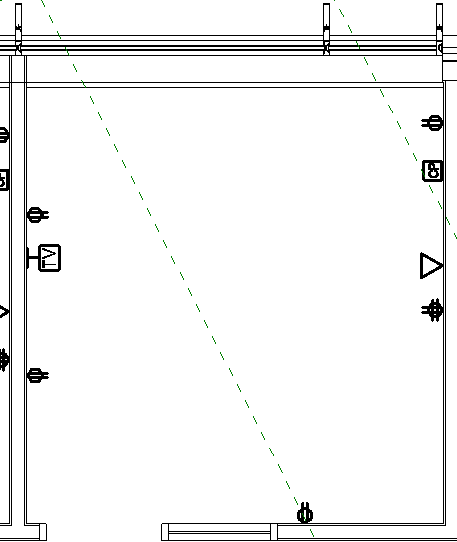Annotation Symbols are used to represent an object that would not be well represented otherwise. A classic example is an electrical duplex receptacle. If you were to accurately draw from plan view what would be seen at 1/8" scale and account for a thick line weight, you might notice a slight budge on the wall from the face plate. You would have no idea what it meant if noticed at all. Let's introduce a circle with two off center lines and we can see where and what should be along the wall.
This symbol does not change size with a change in scale. This is correct. The size after all was somewhat arbitrary to begin with. Wait a minute, you changed scales from 1/8" to 1/2" on your view and the symbols got much smaller?
Yes, they should have. The scale is larger, but the printed size is the same, so in your view it looks smaller, because your view is larger. Put it on a sheet, and overlay it to the same space at 1/8" scale and the annotation symbol will be exactly the same.Sometimes multiple devices need to be shown at the same location. Think about a fire alarm plan showing a pull station and a horn strobe (typically above). How though do we keep the model accurate, drawings legible and not have devices violating the laws of physics, by utilizing Robert Bell's technique for shifting.
The switches in the picture above are too tight together in reality. If we showed them true to scale, the annotation symbols end up on top of one another and we can't read the drawings. Using Robert's technique, we can shift the symbol to be legible without shifting the physical switch. I didn't cheat I promise. Notice the blue switch symbol has a drag arrow at the bottom of it. That is the trick.
This gets potentially more complicated with multiple scales. Yes it is a lot of work to build, but it will be used much more then you might expect. It is certainly worth it. I find it useful for switches, power outlets, data outlets, and Fire Alarm devices all the time. Do you have any suggestions for using this technique for Plumbing, or HVAC?
.



No comments:
Post a Comment